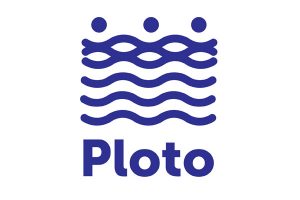
Deployment and Assessment of Predictive modelling, environmentally sustainable and emerging digital technologies and tools for improving the resilience of IWW against Climate change and other extremes
PLOTO aims at increasing the resilience of the Inland WaterWays (IWW) infrastructures and the connected land- infrastructures, thus ensuring reliable network availability under unfavourable conditions, such as extreme weather, accidents and other kind of hazards. Our main target is to combine downscaled climate change scenarios (applied to IWW infrastructures) with simulation tools and actual data, so as to provide the relevant authorities and their operators with an integrated tool able to support more effective management of their infrastructures at strategic and operational levels. Towards this direction, PLOTO aims to: – use high resolution modelling data for the determination and the assessment of the climatic risk of the selected transport infrastructures and associated expected damages; – use existing data from various sources with new types of sensor-generated data (computer vision) to feed the used simulator; – utilize tailored weather forecasts (combining seamlessly all available data sources) for specific hot-spots, providing early warnings with corresponding impact assessment in real time; – develop improved multi-temporal, multi-sensor UAV- and satellite-based observations with robust spectral analysis, computer vision and machine learning-based assessment for diverse transport infrastructures; – design and implement an integrated Resilience Assessment Platform environment as an innovative planning tool that will permit a quantitative resilience assessment through an end-to-end simulation environment, running “what-if” impact/risk/resilience assessment scenarios. The effects of adaptation measures can be investigated by changing the hazard, exposure and vulnerability input parameters; – design and implement a Common Operational Picture, including an enhanced visualisation interface and an Incident Management System. The PLOTO integrated platform and its tools will be validated in three case studies in Belgium, Romania and Hungary.
Project Funding
European Climate, Infrastructure and Environment Executive Agency (CINEA)
HORIZON-CL5-2021-D6-01
Collaborators
Netcompany – Intrasoft – INTRA
Exus Software – EXUS
Budapesti Muszaki Es – BME
Univerza v Mariboru – UM
Diadikasia Business Consulting – DBC
Radios Segelyhivo es Infokommunikacios Orszagos Egyesulet – RSOE
Universite de Liege – ULIEGE
Regia Aytonoma Administratia Fluviala a Dunarii de Jos Galati – AFDJ
Universitatea Danubius din Galati – UDG
Asociata Romanian River Transport Cluster – RRT
MAV Magyar Allamvasutak Zartkoruen Mukodo Reszveny Tarsasag – MAV
National Technical University of Athens – NTUA
RISA Sicherheitsanalysen GmbH – RISA
Budapesti Szabadkikoto Logisztikai Zartkoruen Mukodo RT – BSZL
Finnish Meteorological Institute – FMI
Societal Resilience and Climate Change Center of Excellence – SoReCC
Service Public de Wallonie – SPW MI
Aristotle University of Thessaloniki – AUTH
European Road Transport Telematics Implementation Coordination Organisation – ERTC
SATWAYS
Time Period
Sept 2022 – Febr 2026
Relevant Publications
PLOTO Members







